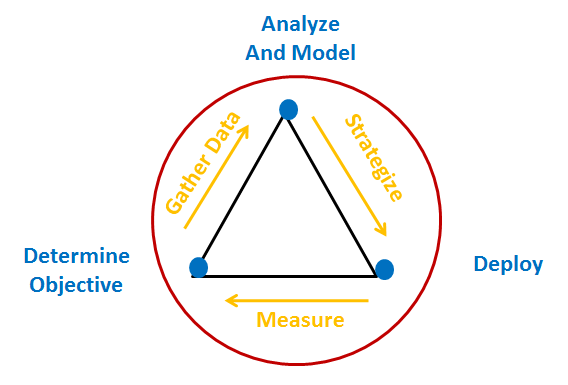Digital Marketing: Be relevant, data-driven and precise
I think all marketers would agree that digital technology has brought about a sea change in the world of marketing. The basic model has gone from almost exclusively “push” messages to more of a “pull” approach that combines traditional channels, such as advertising and direct mail, with strategies like search engine optimization, social media marketing, mobile and email marketing.
At one point in time, marketers could dictate the message their prospects and customers received, and then hope that message resonated enough to drive sales. In the complex sale, this meant Sales was handed scads of leads from a variety of sources with almost no additional information about that prospect on where they were in the buying cycle, or even where they were in the buying process at their company.
Power shifting to the customer
In marketing today, prospects and customers are educating themselves about your industry, business space and product or service area. This holds true in both B2B and consumer marketing.
These people are not interested in receiving marketing messages pushed to them from the mountaintop. They want useful information to begin the decision-making process long before they actually interact with your company or brand.
This new way of looking at marketing has been described a number of ways, and one new book fresh off the presses calls it, “precision marketing.”
I had the chance to speak with Sandra Zoratti, Vice President Marketing, Executive Briefing and Education, Ricoh. Along with Lee Gallagher, former Director Precision Marketing Solutions, Ricoh, she co-authored, Precision Marketing: Maximizing revenue through relevance, which is this week’s MarketingSherpa Book Giveaway.
Sandra defines the term, “Precision marketing is about using data to drive customer insights so that you send the right message to the right person at the right time in the right channel.”
The precision marketing framework is about following a logical, sequential and continually improving process:
- Determine objective
- Gather data
- Analyze and model
- Strategize
- Deploy
- Measure
We covered a variety of what Sandra considers precision marketing topics, including how it can even help improve your marketing career.
Before I get into Sandra’s ideas, here are a few interesting data points from the book:
- 64% of consumers say promotional offers dominate email and traditional mail received. Only 41% consider these offers “must-read” communications.
- Out of the 91% of consumers opting out or unsubscribing from email programs, 46% do so because the messages are not relevant.
- 41% of consumers would consider ending a brand relationship because of irrelevant messaging, and an additional 22% would definitely end the relationship because of irrelevance.
- A survey of IT buyers by the International Data Group found 58% of vendor content was not relevant to potential buyers, and that this lack of relevance reduced the chance of closing a sale by 45%.
Are you seeing a theme here? Relevance is extremely important in marketing today.
“I say customers are powerful, in control, and they know it,” Sandra says. “They vote with their dollars. They vote with their attention, and what I would call their brand-altering online voices. So, customers are really in the driver’s seat, and marketers need to recognize that.”












